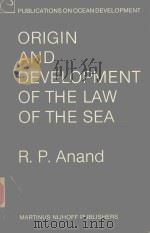《THE INTERNATIONAL LAW OF THE SEA VOLUME 1》
| 作者 | 编者 |
|---|---|
| 出版 | CLARENDON PRESS |
| 参考页数 | 634 |
| 出版时间 | 没有确切时间的资料 目录预览 |
| ISBN号 | 019825346X — 求助条款 |
| PDF编号 | 811862648(仅供预览,未存储实际文件) |
| 求助格式 | 扫描PDF(若分多册发行,每次仅能受理1册) |

Chapter 1 The History of the Law of the Sea1
1.Mare Liberum versus Mare Clausum1
(1) The Sovereignty of the Seas2
(2) The Freedom of the Seas9
(3) The Intellectual Basis of the Controversy10
(4) Imperium and Dominium14
2.High Seas and Territorial Waters18
3.The Codifications20
4.The Status of the Geneva Conventions22
5.The Third Law of the Sea Conference24
Chapter 2 The General Principles of the Law of the Sea31
1.Unilateral Action31
2.The Custom of the Sea and Unilateral Acts33
3.The Methodology of the Law of the Sea37
4.The Significance of Protest in the Law of the Sea38
5.The Normative Effect of the Law of the Sea Conventions44
6.The Relationship between Treaties and Customary Law46
7.The Preceptive and Concessive Roles of International Law in the Investiture of Jurisdictional Zones49
8.The Relationship of International Law and Constitutional Law in the Investiture of Jurisdictional Zones53
9.The Concept of Reasonable Use57
Chapter 3 The Juridical Nature of the Territorial Sea60
A. International Law60
1.The Property Theory of the Territorial Sea60
2.The ‘Police' Theory of the Territorial Sea61
3.The Competence Theory of the Territorial Sea64
4.The Debates in the Institut de Droit International67
5.The Servitude Theory of La Pradelle68
6.The Consolidation of the Sovereignty Theory,1900—192571
(1) Doctrine71
(2) Practice74
7.The Codifications, 1924—193075
8.Article 1 of the Geneva Convention, 195880
9.National Legislation and Title to the Territorial Sea82
B. Municipal Law84
1.The Common Law84
(1) The Crown's Prerogatives in the Sea84
(a) The Proprietorial Nature of the Prerogatives84
(b) The Continuity of the Crown's Prerogatives in the Sea.88
(2) The Problem Raised by the Franconia Case.R. v. Keyn93
(a) The Decision in the Case93
(b) The Territorial Waters Jurisdiction Act, 187896
(c) The Controversy Concerning R. v. Keyn98
(d) The Meaning of ‘Realm': the ratio decidendi of R. v. Keyn100
(3) The Juridical Status of the Territorial Sea in Modern Common Law106
(a) The Common Law106
(b) Crown Grants of the Seabed of the Territorial Sea109
(c) The Law of Scotland111
(d) Colonial Maritime Boundaries113
2.The Law of France121
Chapter 4 The Extent of the Territorial Sea124
1.The Cannon-Shot Rule124
(1) The Sovereignty of the Seas124
(2) The Origins of the Cannon-Shot Rule125
(3) The Proliferation of the Cannon-Shot Rule127
2.The Three-Mile Limit129
(1) The Origins of the Three-Mile Limit129
(2) The Three-Mile Rule in British and American Practice131
(a) The United States Neutrality Act, 1794131
(b) The Decisions of Lord Stowell131
(c) The Negotiations between Great Britain and the United States, 1806132
(d) The United States Decisions133
(e) Negotiation of the Fisheries Convention, 1818133
(3) The Doctrine on the Three-Mile Limit134
(4) The Three-Mile Limit and Fishery Protection135
(5) The Three-Mile Limit and Maritime Jurisdiction138
(6) The Three-Mile Limit and the Colonial Extraterritoriality Rule139
(a) The Origins of the Doctrine of Extraterritorial Incompetence139
(b) Drafting Devices of Territoriality144
(c) Judicial Theory of Extraterritoriality and the Three-Mile Limit145
(d) Legislative Release from Extraterritorial Incompetence146
(e) The ‘Nexus Doctrine' of Colonial Extraterritorial Competence and the Three-Mile Limit147
3.The Twelve-Mile Limit151
(1) The Genesis of the Twelve-Mile Limit151
(2) The Struggle to Sustain the Three-Mile Limit156
(3) The Codifications, 1924—1930157
(a) The Private Codifications157
(b) The Hague Codification Conference, 1930158
(c) The Doctrine after the Hague Conference159
(d) The Geneva Conferences161
(e) The Third Law of the Sea Conference164
4.Evaluation165
(1) The Three-Mile Limit165
(2) The Twelve-Mile Limit165
(3) The Freedom to Determine Limits166
(4) The Criterion of Evaluation168
Chapter 5 The Measurement of the Territorial Sea171
A. The Interior Limit171
1.The Standard Baseline: Low Water171
(1) The Choice of Tidal Level173
(2) The Location of the Low-Water Datum175
(3) Attempts at International Standardization of the Tidal Datum176
(4) The Tidal Datum in Judicial Doctrine179
2.Standard Base Points: Offshore Features183
(1) The Choice of Tidal Datum184
(2) The Customary Law Concerning Offshore Features185
(a) The ‘Portico Doctrine'185
(b) The ‘Portico Doctrine' in the Opinions of the Law Officers186
(3) Drying Features in State Practice191
(4) The Geneva Convention Rules on Offshore Features193
(5) Measurement from Submerged Reefs and Atolls195
(6) Measurement from Artificial Islands196
(7) Measurement from Ice197
(8) The Geneva Rules on Measurement from Offshore Features in Municipal Law: State Practice198
3.The Non-Standard Baseline: Straight Lines199
(1) The Anglo-Norwegian Fisheries Case, 1951199
(a) The United Kingdom Case201
(b) The Norwegian Case201
(c) The Judgment202
(d) Evaluation205
(2) The Geneva Convention Rules on Baselines206
(3) The Interrelationship of Concepts in the Geneva Convention208
(a) Straight Baselines and Bays209
(b) Straight Baselines and Islands210
(c) Straight Baselines and Low-Tide Elevations210
(d) Straight Baselines and Unstable Coastlines211
(4) The Exceptional Character of the Straight Baseline Systems211
(5) Evaluation of Straight Baseline Practice214
(a) The General Direction of the Coast Principle214
(b) The Economic Aspect216
(c) The Plausibility of Article 4217
(6) The Concessive Character of Article 4218
4.Measurement of the Territorial Sea from Ports and Roadsteads218
5.Measurement of the Territorial Sea from River Mouths221
(1) Identification of River Mouths221
(2) Article 13 of the Geneva Convention224
(3) State Practice225
(a) The Reciprocity Treaty Commission, 1855225
(b) The River Plate226
(c) The Sabine River229
B. The Exterior Limit230
1.Possible Methods of Measurement230
2.Envelope of Arcs of Circles Method231
(1) Genesis of the Method231
(2) The Anglo-Norwegian Fisheries Case232
(3) The International Law Commission232
(4) Choice of Basepoints for Arcs of Circles234
Chapter 6 Archipelagos237
1.The Genesis of the Archipelago Concept237
(1) The Hague Codification Conference238
(2) Academic Proposals239
2.The Effect of the Anglo-Norwegian Fisheries Case242
3.Archipelago Proposals in the International Law Commission and at the Geneva Conference244
4.State Practice in the Matter of Archipelagos246
(1) Aaland Islands246
(2) Faeroes Islands246
(3) Galapagos Islands247
(4) The Philippines247
(5) Indonesia249
(6) Hawaii and the Pacific Trust Territory250
(7) Tonga252
(8) Fiji252
(9) Mauritius252
(10) The Bahamas253
(11) Micronesia253
(12) Papua New Guinea253
(13) Solomon Islands253
5.Evaluation of Archipelago Claims254
6.The Third Law of the Sea Conference256
Chapter 7 Innocent Passage in the Territorial Sea260
1.The Genesis of Innocent Passage260
(1) Transitus Innoxium260
(2) The Cannon-Shot Theory261
2.The Modern Right of Innocent Passage263
(1) Innocent Passage in English Law263
(2) The Codifications265
(a) The Institut de Droit International, 1894265
(b) The Codifications, 1924—1930266
(c) The Hague Codification Conference266
(d) The International Law Commission267
(e) The Geneva Convention268
(f) The Third Law of the Sea Conference269
(3) Evaluation270
3.Innocent Passage of Warships274
(1) Doctrinal History274
(2) State Practice277
(3) The Codifications281
(a) The Codifications, 1924—1930281
(b) The Hague Codification Conference, 1930281
(4) The Question of Innocent Passage in the Corfu Channel Case283
(a) The Security Council Debate283
(b) The United Kingdom and Albanian Cases284
(c) The Judgment286
(5) The Geneva Convention287
(a) The International Law Commission287
(b) The Geneva Conference288
(c) The Interpretation of the Geneva Convention289
(6) The Third Law of the Sea Conference292
(7) Mode of Passage of Warships293
(a) Manoeuvres in the Territorial Sea293
(b) Naval Aircraft in the Territorial Sea294
(c) Submarines294
4. Suspension of Innocent Passage297
Chapter 8 Passage in International Straits299
1. The Freedom of Passage through Straits299
(1) The Codifications301
(a) The Institut de Droit International, 1894—1912301
(b) The International Law Association, 1895—1910302
(c) The Hague Peace Conference, 1907302
(d) The Codifications, 1924—29303
(e) The Hague Codification Conference, 1930303
(2) The Corfu Channel Case306
(a) The Facts306
(b) The Contentions of the Parties308
(c) The Judgment311
(3) Article 16(4) of the Geneva Convention314
(4) The Customary Law on Straits317
(a) State Practice: Passage through International Straits in Peacetime317
(i) The Volkitsky Straits317
(ii) The Chiung Chou Straits318
(iii) The Sunda, Lombok, Balabac and San Bernadino Straits318
(iv) The Malacca Straits318
(v) The Straits of Gibraltar321
(vi) The Straits of Magellan322
(vii) The Turkish Straits324
(b) State Practice: Passage Through International Straits in Wartime324
(i) When the Coastal State is Neutral324
(ii) When the Coastal State is Belligerent326
(iii) Minelaying in Straits326
(5) Evaluation327
(6) The Third Law of the Sea Conference328
2.The Mode of Passage through Straits331
(1) The Normal Modes of Passage331
(2) Overflight in Straits333
Chapter 9 Internal Waters: Bay, Ports, Straits338
A.Bays as Internal Waters338
1.The Common Law338
(1) The Genesis of the Concept of Bays338
(a) The King's Chambers339
(b) The Fauces Terrae Doctrine341
(i) The Doctrine of Fitzherbert341
(ii) The Doctrine of Coke342
(iii) The Doctrine of Hale342
(iv) The Coke-Hale Controversy343
(v) The Significance of the Act 15 Richard Ⅱ343
(vi) The Significance of the Controversy for the Distinction between Bays and Other Internal Waters344
(vii) The Significance of the Fauces Terrae Doctrine for the Determination of the Baseline of the Territorial Sea345
(2) The Nineteenth Century Revivals345
(a) The Chambers Doctrine345
(b) The Fauces Terrae Doctrine346
2.The Concept of Bays in the Law of Nations349
(1) The Relationship Between Common Law and International Law Doctrines351
(a) The Linking of the Fauces Terrae Doctrine and the Concept of ‘Bay' in International Law351
(b) The Linking of the Chambers Doctrine and the Concept of ‘Bay' in International Law351
(2) The Closing Line as a Baseline352
3.Bays in Customary Law353
(1) The Headland Theory Generally354
(2) The Practice of Great Britain355
(a) The North Atlantic Coast ‘Bays'355
(i) The Anglo-American Controversy355
(ii) The North Atlantic Coast Fisheries Arbitration359
(iii) The Bay of Fundy Question361
(b) The Law Officers' Opinions362
(c) The Moray Firth Controversy364
(d) Evaluation of British Policy on the Extent of Bays367
(e) Commonwealth Judicial Practice367
(3) The Practice of the United States371
(a) United States Policy371
(b) United States Judicial Decisions371
(c) The Alleganean Case, 1882373
(4) The Practice of Other Countries373
(a) France373
(b) Italy374
(c) Germany374
(d) Spain and Portugal374
(e) Soviet Union375
(f) Sweden375
(g) Denmark376
(h) Latin America376
(i) Morocco377
(j) Middle East377
(k) People's Republic of China377
(l) Thailand377
(5) The Codifications,1894—1930378
(a) The Institut de Droit International,1894378
(b) The Codifications of the 1920s379
(c) The Hague Codification Conference,1930379
(6) The Alternative Tests in Customary Law381
(a) The Double Territorial Sea Limit381
(b) The Ten-mile Limit382
(c) Headland-to-Headland384
B.Ports, Harbours, Roadsteads, and Creeks as Internal Waters385
C.Straits as Internal Waters385
Chapter 10 The Conventional Rules on Bays389
1.The Genesis of the Geneva Rules389
2.The Semi-Circle Test390
(1) The Hague Codification Conference Proposal390
(2) The Semi-Circle Test in the Geneva Convention,Art. 7392
(3) The Semi-Circle Test and Landlocked Waters:Para. (2)393
(4) Landlocked Waters that are not covered by theSemi-Circle Test394
(5) The Comparative Areas of Semi-Circle and Bay:Para. (3)395
(6) The ‘Natural Entrance Points': Para. (3)396
(7) The Semi-Circle Test and the Low-Water Mark:Para. (3)398
(8) The Semi-Circle Test and Compound Bays399
(9) Islands at the Entrance402
(10) Where there is only one Natural Entrance406
3.The Twenty-four Mile Rule407
(1) Calculation of the Terminal Points407
(2) The Relationship of the Semi-Circle and Twenty-Four Mile Rules408
4.The Terminal Points of the Closing Line412
5.The Twenty-four Mile Rule and Fictitious Bays414
6.Conclusion416
Chapter 11 Historic Waters417
1.The Status of the Problem of Historic Waters417
(1) Historic Waters: Exception or Instance?420
(2) Evaluation of the Question422
(3) The Need for Historic Waters424
(4) Relationship of Historic Waters to Prescription426
2.The Supposed Elements of Historic Waters427
(1) Effectiveness427
(2) Effluxion of Time432
(3) The Attitude of Foreign States433
3.Vital Interests435
Chapter 12 The Legal Regime of the Seabed439
1.The Geomorphology of the Seabed439
(1) The Revelations of the Earth Sciences439
(2) Continental Margin and Abyssal Seabed443
(a) Continental Margin443
(i) Continental Shelf443
(ii) Continental Slope444
(iii) Continental Rise444
(b) Abyssal Seabed445
(3) Natural Prolongation446
2.The Characterization of the Seabed449
(1) Sedentary Fisheries450
(2) Occupational Theories of the Continental Shelf456
3.Deep-Sea Mining457
(1) The Moratorium459
(2) The Third Law of the Sea Conference463
Chapter 13 The Continental Shelf467
1.The Genesis of the Continental Shelf Doctrine467
2.The Status of the Continental Shelf in Customary Law475
3.The Juridical Nature of the Continental Shelf476
(1) The Significance of ‘Sovereign Rights'477
(2) The Juridical Nature of the Continental Shelf in the North Sea Continental Shelf Case and the Aegean Continental Shelf Case480
(3) The Inherency of the Continental Shelf482
(4) State Practice on the Juridical Nature of the Continental Shelf484
(5) Military Uses of the Continental Shelf488
4.The Legal Definition of the Continental Shelf488
5.The Extent of the Continental Shelf492
6.The Living Natural Resources of the Continental Shelf498
7.The Security of Continental Shelf Installations503
8.The Control of Production from the Continental Shelf of the United Kingdom504
9.Revenue-Sharing in Respect of Exploitation beyond the 200-Mile Limit507
10.Submarine Cables and Pipelines on the Continental Shelf508
11.Cross-Boundary Application of Law to the Continental Shelf509
Chapter 14 Fishery Zones510
1.The Origins of the Right to Exclusive Fishery510
(1) The Newfoundland Fisheries511
(2) The Effect of the Cannon-Shot Rule512
(3) The Anglo-American Fishing Negotiations,1783—1818513
(4) The Absolute Situation in the Nineteenth Century514
(a) The Channel Oyster Fishing Controversy515
(b) Legislation519
(c) The Behring Sea Fur Seals Arbitration522
2.The Emerging Problem of Conservation524
3.The Contemporary Ecological Problem527
(1) The Principle of Abstention528
(2) The Principle of Preference529
4.The Concept of Adjacent Fishery Zones530
(1) The Problem of Article 1 of the High Seas Convention531
(2) Practice Respecting Twelve-Mile Zones532
(3) The Phasing-out Agreements and Acquiescence536
5.The Fisheries Jurisdiction Case539
6.The Progression from Adjacent Fishery Zones to the EEZ.542
7.The Western European Fishery System543
(1) The London Convention, 1964543
(2) Legislation544
(3) The Fisheries Policy of the EEC545
8.Regional Fisheries Agreements548
(1) The North East Atlantic Fisheries Convention, 1959548
(2) The North West Atlantic Fisheries Convention, 1949549
(3) The Rio de Janeiro Convention, 1966549
(4) The Rome Convention on the South East Atlantic, 1969549
(5) The Antarctic Seals Convention, 1972550
(6) The Baltic Fisheries Convention, 1973550
9.The Draft Caracas Convention550
Chapter 15 The Exclusive Economic Zone553
1.The Genesis of the EEZ553
(1) The Declaration of Santiago, 1951553
(2) The Scientific Basis of the Claims555
(3) Regional Development556
(4) Latin American 200-Mile Claims557
2.The Third Law of the Sea Conference559
(1) The Preliminary Debates559
(2) The Draft Caracas Convention562
(a) The Concept of the Maximum Sustainable Yield564
(b) The Concept of Allocation of the Surplus565
3.Anadromous, Catadromous and Migratory Species568
4.The Status of the EEZ570
5.The Juridical Nature of the EEZ575
6.The Relationship Between the Continental Shelf and the EEZ579
7.Land-locked States and the EEZ580
BIBLIOGRAPHY582
TABLE OF CASES608
INDEX OF CONVENTIONS AND INTERNATIONAL AGREEMENTS616
INDEX OF AUTHORS CITED619
GENERAL INDEX626
《THE INTERNATIONAL LAW OF THE SEA VOLUME 1》由于是年代较久的资料都绝版了,几乎不可能购买到实物。如果大家为了学习确实需要,可向博主求助其电子版PDF文件(由 CLARENDON PRESS 出版的版本) 。对合法合规的求助,我会当即受理并将下载地址发送给你。
高度相关资料
-
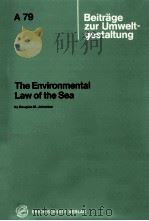
- THE ENVIRONMENTAL LAW OF THE SEA
- 1981 ERICH SCHMIDT VERLAG
-
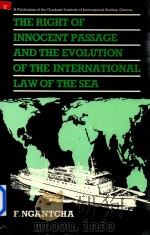
- The Right of Innocent Passage and the Evolution of the International Law of the Sea the Current Regi
- 1990 Pinter Publishers
-
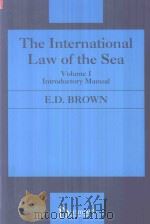
- The International Law of the Sea
- 1994 Dartmouth
-
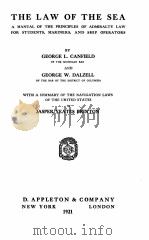
- THE LAW OF THE SEA
- 1921 D. APPLETON AND COMPANY
-
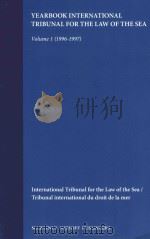
- International Tribunal for the Law of the Sea Yearbook 1996-1997 Volume 1
- 1999 Kluwer Law International
-
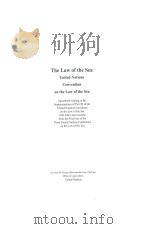
- The Law of the Sea
- 1997 United Nations
-

- THE INTERNATIONAL LAW OF THE OCEAN DEVELOPMENT VOLUME II
- 1975 SIJTHOFF LEIDEN
-

- INTERNATIONAL LAW OF THE SEA AND MARINE AFFAIRS: A BIBLIOGRAPHY SUPPLEMENT TO THE 1980 EDITION
- 1984 MARTINUS NIJHOFF PUBLISHERS
-

- WESTERN EUROPE AND THE DEVELOPMENT OF THE LAW OF THE SEA 1
- 1980 OCEANA PUBLICATIONS INC.
提示:百度云已更名为百度网盘(百度盘),天翼云盘、微盘下载地址……暂未提供。➥ PDF文字可复制化或转WORD



